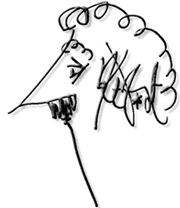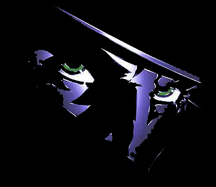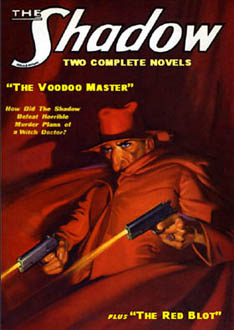DENNIS O’NEIL: The kryptonite reality
 Once again, life has imitated comics. Maybe comics should sue.
Once again, life has imitated comics. Maybe comics should sue.
This latest instance was reported in the New York Times a couple of weeks ago and has to do with kryptonite, the stuff from Superman’s planet or origin which can lay the Man of Steel low, or even all the way down. As far as I know, kryptonite was introduced in the early 40s by the writers of the Superman radio show. Since I was only a year or two or three old at the time, I’ll forgive them for not getting in touch with me and telling me why, exactly, they introduced it. But a guess might be: to facilitate conflict, which is widely considered to be a necessary ingredient in drama, and especially melodrama.
These guys – I assume they were guys – and their comic book counterparts were facing a fairly unique problem: how to get their hero in trouble and thus create conflict/drama, and do it not only once, but several times each month, or even more often.
Oh, sure, there had been superhuman characters in world literature and myth before Jerry Siegel and Joe Shuster, but they were in self-contained stories, and not many of those, and the problem was pretty limited. But with Superman… well, here was a fellow who was faster than a speeding bullet, more powerful than a locomotive, able to leap tall buildings in a single bound – and that was when he was in his infancy. (For the record: Superman is only a year older than me. That is, he appeared only about a year before I did, though I gestated for the customary nine months and Supes took a leisurely four years to progress from the imaginations of Joe and Jerry to the public prints. He was a slow developer, but once he got started…) And he literally become more powerful with every passing year. And he had to have a lot of adventures.
So, okay, how do you get this guy in trouble, often, and thus create suspense and interest? The question has been answered in many ways, many times over the years. Kryptonite was one of the earliest of these answers. According to the mythos, it is a fragment of – I guess mineral – from Krypton, where Supes was born. Something in the gestalt of our planet makes kryptonite dangerous to natives of Krypton. (All of which you almost certainly know, but we do try to be thorough here.)
We thought it was fictional. Some of us, of the professional writing ilk, further thought that it was neither more nor less than an answer to a plot problem and at least one of that ilk thought it was overused and temporarily retired it. But now, a Chris Stanley, of London’s Museum of Natural History, analyzed a substance some of his colleagues discovered and, according to the Times, “found that the new mineral’s chemistry matched the description of kryptonite’s composition in last year’s film Superman Returns.”
It is not known whether or not anyone collapsed near the stuff.
At this point, you can either shrug and get on with your life, or pause, and engage in some pretty wild speculation about the nature of reality.
Be warned: We probably aren’t finished with this topic.
RECOMMENDED READING: The God Delusion, by Richard Dawkins.
Batman, The Question, Iron Man, Green Lantern and/or Green Arrow, and The Shadow, as well as all kinds of novels, stories and articles.
Dennis O’Neil is an award-winning editor and writer of comic books like


 Do my hands tremble as I type these words? Are there creaks and groans coming from the room behind me? Is the air chill and sticky?
Do my hands tremble as I type these words? Are there creaks and groans coming from the room behind me? Is the air chill and sticky? I like continuity. Always have, always will. It enriches serialized fiction as found in pulp magazines, comic books, movies and television. In an ideal world, things would be consistent from the beginning of any new creation, but it rarely is.
I like continuity. Always have, always will. It enriches serialized fiction as found in pulp magazines, comic books, movies and television. In an ideal world, things would be consistent from the beginning of any new creation, but it rarely is. Our friend
Our friend  Kurt Vonnegut is gone.
Kurt Vonnegut is gone. I had it easier than many comics writers. I began in the business as an assistant to Stan Lee in 1965, when Marvel was just completing its metamorphosis from obscure Timely Comics to publishing phenomenon, and Stan’s vision of what a comic book company could be was pretty much complete. Implicit in the writing part of the job was the requirement that I imitate Stan’s style – after all, Stan’s style was Marvel. That made the job simple: imitate Mr. Lee successfully and I was doing it right.
I had it easier than many comics writers. I began in the business as an assistant to Stan Lee in 1965, when Marvel was just completing its metamorphosis from obscure Timely Comics to publishing phenomenon, and Stan’s vision of what a comic book company could be was pretty much complete. Implicit in the writing part of the job was the requirement that I imitate Stan’s style – after all, Stan’s style was Marvel. That made the job simple: imitate Mr. Lee successfully and I was doing it right. In a comprehensive article noting the planned Wolverine, Batman, Green Lantern and Justice League of America movies, the
In a comprehensive article noting the planned Wolverine, Batman, Green Lantern and Justice League of America movies, the  Suddenly, the air was full of bats!
Suddenly, the air was full of bats! Okay, okay, I’m sorry. I know I promised, at least implicitly, to deliver Who Knows What Evil Lurks – Part 2 this week. But that will take some time and maybe digging, to write and, honestly, I have the luxury of neither. By the time you read this, I’ll either be at or returning from Juaniata, Pennsylvania, where I’ve been invited to be the guest of Jay Hosler and maybe shoot off my mouth in public a bit. I’ve been busy doodling notes for said mouth-shooting; hence no dissertation on lurking evil.
Okay, okay, I’m sorry. I know I promised, at least implicitly, to deliver Who Knows What Evil Lurks – Part 2 this week. But that will take some time and maybe digging, to write and, honestly, I have the luxury of neither. By the time you read this, I’ll either be at or returning from Juaniata, Pennsylvania, where I’ve been invited to be the guest of Jay Hosler and maybe shoot off my mouth in public a bit. I’ve been busy doodling notes for said mouth-shooting; hence no dissertation on lurking evil.
 Meet Anthony Tollin.
Meet Anthony Tollin.








